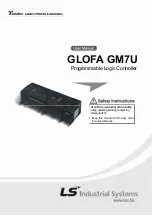9.3.6 Comparator (CMP0) Reset
Comparator0 can be configured as a reset source by writing a 1 to the C0RSEF flag. Comparator0 should be enabled and allowed to
settle prior to writing to C0RSEF to prevent any turn-on chatter on the output from generating an unwanted reset. The Comparator0
reset is active-low: if the non-inverting input voltage (on CP0+) is less than the inverting input voltage (on CP0–), the device is put into
the reset state. After a Comparator0 reset, the C0RSEF flag will read 1 signifying Comparator0 as the reset source; otherwise, this bit
reads 0. The state of the RSTb pin is unaffected by this reset.
9.3.7 Watchdog Timer Reset
The programmable Watchdog Timer (WDT) can be used to prevent software from running out of control during a system malfunction.
The WDT function can be enabled or disabled by software as described in the watchdog timer section. If a system malfunction prevents
user software from updating the WDT, a reset is generated and the WDTRSF bit is set to 1. The state of the RSTb pin is unaffected by
this reset.
9.3.8 Flash Error Reset
If a flash read/write/erase or program read targets an illegal address, a system reset is generated. This may occur due to any of the
following:
• A flash write or erase is attempted above user code space.
• A flash read is attempted above user code space.
• A program read is attempted above user code space (i.e., a branch instruction to the reserved area).
• A flash read, write or erase attempt is restricted due to a flash security setting.
The FERROR bit is set following a flash error reset. The state of the RSTb pin is unaffected by this reset.
9.3.9 Software Reset
Software may force a reset by writing a 1 to the SWRSF bit. The SWRSF bit will read 1 following a software forced reset. The state of
the RSTb pin is unaffected by this reset.
9.3.10 USB Reset
Writing 1 to the USBRSF bit selects USB0 as a reset source. With USB0 selected as a reset source, a system reset will be generated
when either of the following occur:
• RESET signaling is detected on the USB network. The USB Function Controller (USB0) must be enabled for RESET signaling to be
detected.
• A falling or rising voltage on the VBUS pin.
The USBRSF bit will read 1 following a USB reset. The state of the RSTb pin is unaffected by this reset.
EFM8UB3 Reference Manual
Reset Sources and Power Supply Monitor
silabs.com
| Building a more connected world.
Rev. 0.2 | 81


















